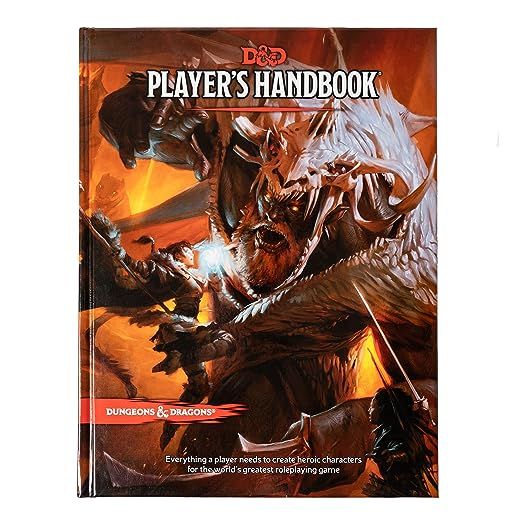D&D Player’s Handbook (Dungeons & Dragons Core Rulebook)
4.9
-
53,294 ratings
- The essential rulebook for Dungeons & Dragons (5th edition)
- Contains all the rules you need to know to play D&D
- Step-by-step guide to creating and leveling up characters
- Go-to player reference for over 350 spells, equipment, and more
- 1 of 3 D&D Core Rulebooks—the Player’s Handbook (rules for playing the game), the Dungeon Master’s Guide (how to run the game), and Monster Manual (creatures to encounter in your game)
Hardcover
$35.49
Ships from
Amazon.com
Payment
Secure transaction
ASIN
0786965606
Print length
0 pages
Language
English
Publisher
Wizards of the Coast
Publication date
September 08, 2014
Dimensions
8.55 x 0.79 x 11.14 inches
Item weight
1 pounds
About the authors
Dungeons & Dragons
Dungeons & Dragons (D&D) is a tabletop role-playing game (RPG) where players create characters and explore fantasy worlds together. The game involves players forming an adventuring party, battling enemies, finding treasure, and leveling up in experience. The Dungeon Master (DM) acts as the game's referee and storyteller, creating the characters and locations, and maintaining the game's setting.
Read more
Reviews
Customer reviews
4.9 out of 5
53,294 global ratings

Jason N. Beil
5
Useful Set of Rules in an Attractive Package: D&D Is Back!
Reviewed in the United States on September 2, 2014
Verified Purchase
Dungeons and Dragons, the granddaddy of all role-playing games, has finally released its long-awaited fifth edition. The new rule set provides the perfect opportunity for lapsed players to return to the game, as well as allowing new players to get in on the ground floor. The new edition takes a back-to-basics approach, returning to an old-school feel while maintaining the best game mechanics from the last few editions. The rules have been streamlined without being over-simplified, making the game more inviting than ever for new players of all ages.
And new, preferably young, players are needed if the hobby is to survive into the future. Tabletop RPGs have always been a niche market, and while D&D enjoyed a brief period of mainstream popularity, it has had a difficult time competing for the attentions of the youth market. Video games, television, and movies have largely replaced board games, books, and table-top RPGs as their primary sources of entertainment. But if any edition of D&D has a chance to recapture some of that market, it is this one.
The new Player's Handbook, the first of three core rulebooks for the new D&D, is an exceptional product. It provides an excellent introduction to playing the game, with simple, clear rules for adventuring and combat. It provides details for the major player character classes and subclasses, along with all their abilities as they advance from levels one to twenty. All the classic classes and races are represented, as well as a few of the newer ones from third and fourth edition.
The writing is top-notch, with a lot of flavor and description provided on top of the necessary crunch of the rules. Far from a dry listing of rules and tables, the books is actually enjoyable to read. The artwork is fabulous, and its diversity should be applauded. Characters are male and female, black and white, and all the fantasy races are well represented. As others have pointed out, there are no gratuitous pictures of female warriors in scanty attire; all characters here are appropriately dressed for adventuring, not the boudoir! It is as if Wizards of the Coast has finally realized that D&D has a very diverse audience: male, female, black, white, Asian, gay, straight, and all permutations thereof. Instead of catering to one group, they have made an effort to be inclusive, and that can only be a good thing.
New in this edition are "backgrounds," which is a profession you practiced or life you led before you started adventuring. From criminal to noble, soldier to acolyte, these backgrounds provide additional skills, proficiencies, and role-playing hooks to help you get into character. Along with your class and race, your background rounds out your character into a life-like persona.
Races include your standard human, dwarf, elf, and Halfling, along with more exotic choices such as gnome, dragonborn, and tiefling. Classes are the classic fighter, wizard, rogue, and cleric, joined by the druid, sorcerer, bard, warlock, and more. Each class has two or more sub-classes (archetypes) which allow you further customize your character. Further, an optional feat system and the ability to multi-class can provide players with everything they need to make their character unique.
A great many spells are included in the book, and many of the classes have at least some spell-casting ability. Cantrips, or zero-level spells that can be cast at-will, provide wizards and sorcerers with useful powers they can use any time, so they won't find themselves relegated to throwing daggers once their sleep spells and magic missiles are exhausted for the day.
Combat is greatly simplified and will move much faster than it did in fourth edition, or even third. Gone are the slew of modifiers players and Dungeon Masters were forced to keep track of in previous editions, replaced by the Advantage and Disadvantage mechanic (roll 2d20, take the highest roll if you have Advantage on an attack, save, or ability check; roll 2d20 and take the lowest roll if you have Disadvantage). It is elegant, easy, and in practice, fast and fun. Using a grid and miniatures is optional, and combat in the imagination, called Theater of the Mind, is completely viable. Many players and Dungeon Masters will still prefer to use a grid to keep track of position, but it is not required since combat is not as tactical as it has been in the past. Or rather, it can be, but that is completely up to each individual group.
The rules are simplified, and intentionally left open to interpretation in places. This is because fifth edition is returning power to the Dungeon Master, or referee, as was the intention in 1974 when the game was created. Adding optional modular rules from the Dungeon Masters Guide and other sources should be simple with this system, as should creating house-rules. Each game will be different, and, depending on the skill of the referee, fast, deep, exciting, and unique. Role-playing and exploration are emphasized as much as combat (the Three Pillars of Adventure), and there are plenty of rules and suggestions in each category.
Physically, the book is beautiful and well put together. There have been some reports of faulty products, with pages missing, faded, or falling out, but my copy is pristine, as I am sure most are. If you purchase the book and receive a faulty copy, return it for a good one!
In all, the new Player's Handbook is a great product, and a must for the serious D&D player, or those wanting to give the game a try. The rule system is the best yet, and the book itself is a beautiful addition to any bookshelf. I am more than pleased with it, and highly recommend it to any role-playing game enthusiast.
Read more
16 people found this helpful
Amazon Customer
5
I pretty much ignored 3
Reviewed in the United States on November 30, 2015
Verified Purchase
I started playing D&D 28 yrs ago as a player in 1st ed. I then went on to run several long campaigns in 2nd ed, including through the "Players Options" period towards the end. I pretty much ignored 3.0, and took some time off. 3.5 got me fired up and I ran 2 more long campaigns with those rules, one of which I continue to run currently. Never touched 4th. I've been ignoring 5th, and Pathfinder for that matter, because I'm so heavily invested in my current campaign and I don't just drop things and start over because "newer, cooler" stuff comes out.
3.5 really began bothering me once my group hit 9th level or so. I still considered myself new to it, I had never played high levels in it, and I held out with 2nd ed. for so long I totally missed 3.0, and frankly, by the time I started playing 3.5 it was very old. So I really didn't know what to expect from 3.5 and it takes me a couple years to really grasp all the pros and cons of a system, and also to understand the way it's rules subtly effect the way people play, and the actual flavor of the game. Going into it, I was excited about 3.5. They appeared to both streamline and unify things with the d20 core mechanic. I liked what they did with the classes. I likes the artwork, and I thought the indepth skill system and the idea behind feats were both really cool..in theory...
In play, as both player and DM there was this feeling of being held back, and it was hard to pin down, and it just got worse the longer I played. 3.5 was difficult to run if you honor the rules and like to do things legit like I do. Don't get me wrong, winging it is a time honered tradition and an artform I love, but I also enjoy keeping to the rules in a way that feels both realistic and fun for everyone. I believe the very rules of the game themselves can be a inspiration for stories, themes, and ideas, for both players and dms.
Anyways, I'll stop now because this is not supposed to be a review of 3.5.
Got the 5th ed PHB. I was blown away. This reminded me of something that had almost died, a deep desire to imagine and play, it reminded me why I love this game so much, and it really brought me back to the kind of game I want to be playing. Here are the highlights 5th ed has added or changed:
-First, I applaud the writers. 3.5 edition books were tedious to read. The rules read like text from a technical manual. The fluff was either cliche, or trying so hard to be different that it came across again as, cliche. This entire book is just interesting and inspiring to read. I literally get adventure ideas from every other paragraph, it's just easy enough that you could hand it to your little brother and he could struggle through it, yet rich enough, deep enough, intelligent enough that you don't feel lame reading it as an adult.
-The have made your character's background actually important. For instance, if you're fighter was a criminal, he might be really good a sneaking around in addition to beating people up, but it he grew up in a temple, he might be versed on religious studies, as so fourth. Each character picks a background which gives them a few skills and a lot of flavor. There's more to it, but it's nice this game has finally brought character background into the mix in a formal way, instead of being just this thing you "should come up with", that a lot of people ignore, or gloss over. Where you came from now effects your character, and at the same time gives you another layer of customization without complicating things too much.
-Combat is less herky-jerky. They've somehow simplified things without taking away variety. In fact, in a couple sessions I played, it just felt like you could get more done with your round. They've also added in reactions, so different classes have the opportunity to interrupt the flow of the round and sneak something in that can change the battle or save the day. People have a lot more reason to pay attention when it's not their turn, because they may have a chance to act.
-They changed the way spells work in a way that nearly brought tears to my eyes...so much simpler, much more flexible, and still all the variety there was before in spells.
All in all I can't put this book down and can't wait to start a new group. 5th edition appears to really empower the DM, without taking away options from the players. I don't know if this makes sense to anyone, but the direction 5th is taking feels more like a fantasy game, and less like a superhero game. It feels a bit like 2nd edition, but still keeps the d20 core mechanic, and makes tangible, rather brilliant improvements on many areas of the game. I have to applaud WOtC, for doing this right beyond what I thought was possible. I didn't know if the spirit of the game could be recaptured after 3.5 and from what I've heard, 4th ed, turned it into an escalating numbers game that felt like WOW on paper. The rules add to the story now, instead of burdening it. The rules make combat exciting now instead of slowing it down. Magic feels magical again instead of being a handful of dice doing fire damage. D&D is back, it had regained its soul. If you've been out of the game for years because it just stopped feeling right to you, if you miss the game, if you're playing Pathfinder/3.5 but you're tired of the cold war/numbers escalations between you and your DM, and especially if you're tired of battles taking 3+hours, and being mentally exhausted because of the constant need to track so many numbers, if you're a gamer and you're curious about the godfather of all games, you should really check this out. There is so much content and flavor in this book. I paid $30 for it but would have been just as excited to pay more for it...it's just the best thing I've seen in some time.
Read more
23 people found this helpful
B. Mills
5
Doesn't replace 3.5 but provides streamlined rules for different kind of play (or players)
Reviewed in the United States on August 29, 2014
Verified Purchase
I play 3.5 and love/hate it. Mostly I love it but sometimes the rules get me frustrated when all I want to do is role-play and I need like 3 skills, a feat, and I have to make like 3 checks just to jump over a table (before anybody posts, this is an exaggeration - but my DM would force me to make at least a jump and balance check).
BUT, all the rules, and books, and home-brew stuff (and pathfinder) are also great. There is a rule for everything, even some that make no sense, but hey, there's a rule for that. And yet 3.5 remains incredibly flexible, and breakable, but then the DM rolls out broken monsters and its great. Never really played 2nd or 1st edition but some people really like em'. 3.5 didn't replace them and 5th edition didn't replace 3.5.
3.5 is still out there and will continue to be played and remains a very easy system to adapt and modify.
But 3.5 isn't always easy system to play, and 5th is. And that's a good thing.
Because 5th edition DOES replace 4th IMHO. If you are going to make the game easier to play, don't focus on combat, which 4th edition did. But 5th edition focuses on role-play, the whole point of DND for me personally. Role-play and play freedom, let me explain.
5th edition IS streamlined (major overhaul, skills pretty much gone - A/C is super simple - no more 5 foot steps, modifiers are much reduced) and it has game mechanics that promote role-play and even tables for rolling traits, bonds, and even flaws (personality, not physical) such as, "if there is a plan you forget or ignore it." Do you have to follow this? No, but if you do you gain inspiration points that give you advantage on a roll. Basically you get to roll 2 dice. The math on rolling two dice is a lot simpler than, mod here, ranks this, plus misc. mod this equals... Now it boils down to, 2 is better than one. All of this serves to make the game a lot more approachable to new players, but not by trying to sell them on combat (like 4e did) which will never work because none of us play the game for combat (or at least no one I know).
If you want streamlined combat well... video games are making millions (maybe billions?) of dollars a year for a reason.
But why does tabletop gaming have it all over video games though? Freedom to do ANYTHING. 3.5 gave us one kind of freedom (I can't speak of 2nd edition or anything earlier) by giving us a huge amount of rules and options to draw from that if you were willing to commit yourself to learning, provided literally limitless options. COmbat was fun in this context because you came up with some bizare cross-class with certain feats and items that allowed you to do something unique and interesting and power (sometimes totally broken).
5th edition gives us a different kind of freedom with much simplified rules that are more intuitive. All checks match to an ability (even saves) proficiency makes it much more intuitive for the lay person too. You want to jump over that table? Roll 1d20, plus dex modifier (obviously). Are you proficient, add 2, done. One roll, make it? Cool. It's also easier on the DM. I would feel comfortable DMing 5th edition and I am trying to talk my friends into trying it out with me because I think they could handle the system and would enjoy knowing what the hell they were doing. I have been selling my friends on table-top rpgs for years on the basis that "you can do literally anything" but I have done a lot of the math for them. Now I think they could handle their own characters stats. Also,I think the role-play rules will be great for my friends who are reluctant to come out of their shells right away.
It's not always about breaking the game, and WOTC has clearly tried to unbreakable a lot of things and put rational floors and ceilings (and reduce min-maxing). Yes, it feels more limited in this fashion, but it sucks in 3.5 when one player has an A/C of 31 and everyone else in the party has an A/C around 20. 5th edition reduces this possibility by reducing possibilities, but that opens up the world to your imagination over thinking only in terms of game mechanics. This is good for people who don't want to spend hours thinking about character creation and just want to play and not be told, sorry, you can't climb that because you don't have ranks in climb.
I know that pathfinder addressed some of these issues but that is still more "hardcore" that 5th edition IMHO.
And that's a good thing! If you don't have friends that you would like to game with who aren't into all the rules or are intimidated by RPGs, or you have never thought to yourself, man I just want to jump in and play instead of looking-up specifics half the time, then ignore this reivew (and this edition).
If you are perfectly happy with 3.5 and/or pathfinder, awesome. It's not going anywhere. I know I will keep playing both.
But 5th edition is a happy addition to my shelf (where 4th was not) because it offers a different way to play the game, and a system that is very good in my opinion; the care, and play-testing really shows!
Are there problems? Yes, the dragon-born draconic bloodline sorcerer thing is weird... Also dragonborn seem a little broken to me compared to other races, although all the races have received some love. I really enjoy the specifics of forest versus rock gnomes, hill dwarves versus mountain dwarves, and the flavor text is great!
Do I need the book to give me little blurbs on dwarf racial characteristics, what they are like, how they treat other races? No. But it's fun, and immersive. Do I need the book to give me sub-race characteristics? No, I could (or the DM could) do that on my/her own right. Could I streamline 3.5 rules? Yes, but I would probably spend a lot of time getting the kinks out. I've tried actually. But hey, do I eve need any book at all? I could just make up all the rules! I could completely invent my own game! And I bet it wouldn't be half as good as this one.
And in terms of what you pay for, it's great to get a flavor text, and a pretty complete system (I could DM a game right out of the PHB, there are even monsters in the back!) and the art!
The art is truly the best I have seen! I love to flip through the older books for the art, I am dorky like that. And 3.5 has some good art, and some is, OK. Pathfidner had a great art style IMHO. But the art in this edition raises the bar! and it is well integrated onto each highly readable page. I would like to note that I appreciate the lack of chain-mail bikinis. Once again, I am trying to get MORE of my friends to play, not fewer. The art would attract many and offend few. Which is a good thing.
So, in terms of what you pay for, good system, good layout, immersive flavor text and play ideas, and amazing art across every page. And it's complete enough you could DM right out of the PHB. At 50 bucks it's a good deal, at 30 its a steal!
But best of all, 3.5 still exists! But this edition makes the tabletop gaming library more versatile and appealing. IF you think that's a good thing, and want to try a new take on a great game, I highly recommend this edition (for what it is - which isn't 3.75).
If your happy with what your playing. Then happy gaming!
Read more
22 people found this helpful
Surfass Family
5
Smoothest Running Edition to Date - Highly Recommended!
Reviewed in the United States on August 30, 2014
Verified Purchase
I am going to divide this review into two sections. The first section will be about the content/rules/mechanics of the new 5th Edition Player's Handbook and how they play out. The second section will be about the physical book itself (construction, art, layout, etc). If you are new to pen and paper role-playing games, I would say that hands down this is the edition of Dungeons & Dragons you will want to pick up. To give a little background I have been playing pen & paper RPGs off-and-on since I was a teenager, which is now a solid 15 years or so. I started with an old D6 Star Wars RPG system, migrated to D&D 3.0/3.5 and until recently have been playing Pathfinder. I skipped D&D 4th edition. That gives some background, so now on to the review!
Rules & Mechanics (5/5) In my opinion, Wizards did a fantastic job of "trimming the fat" from the previous editions and bringing back the "three pillars of adventure" into the game. You can see a majority of these changes via the free Basic Rules that Wizards provides on their website. There are quite a few changes, so I will do my best to sum up the major ones I have seen thus far:
-
Advantage/Disadvantage: Roll twice, take the higher/lower result. It is simple and doesn't require multitudes of +/- modifier bloat. This is something I hated about 3rd edition because it turned combat specifically into a elementary math exam. "Oh I forgot that I got the +2 from the Bardic inspiration, so does that mean I hit? I rolled 10...+2+1+3+1+4...so...21?" Some people like this, because it numerically showed that their characters were growing stronger and that each person/item provided a measurable contribution to the growth. For players, that may be fine, but for DMs this tends to slow things down. Now there is a mechanic that can be utilized on a wider variety of skills/abilities/attacks/conditions, or even used impromptu by the DM when applicable. It isn't perfect, but it is elegant and simple and makes most things "make sense" and move along.
-
Individual Saves for Attributes This just makes sense. No more Reflex/Will/Fort, instead each attribute is important and carries its own save. This opens up new possibilities for DMs, while makes it easier for players since there is no arbitrary saves per class system.
-
Spell casters and primary ability score attacks improved. There are now useful cantrips (level 0 spells), including at least one combat cantrip per spell casting class. This means that casters are still dangerous even after having exhausted higher level spells. It gives options, something that made combat excruciatingly boring for casters after their spells per day were exhausted.
The other issue is that caster's magical attacks still usually leveraged Strength and Dexterity-based stats. This has been changed. Now for most spells, the primary casting attribute is added instead.
The finesse feat has been included with some weapons, meaning weapons like rapiers, daggers and darts can use the Dexterity ability score modifier instead of Strength. Ranged attacks such as bows also add their Dexterity to damage instead of Strength as well, something that may be a bit controversial, but I feel is an improvement.
- "Bounded accuracy", Skills, Feats and Proficiency I hated in 3rd edition/Pathfinder that at achieving a level, you "suddenly" could pick up skills that a character had little to no experience in previously, and then suddenly be astonishing at. There is no longer the "+21 to Diplomacy" skill bonuses. The emphasis on skills and feats has been "nerfed to the ground" with many skills and feats removed. In fact, feats are completely optional and up to DM discretion. Instead the focus is on "Backgrounds" and "Proficiency" instead. Essentially, what used to be a "Base Attack Bonus" is now called "Proficiency" and is applied to anything that you are "Proficient" at. This can be skills, saves and attacks. Minimum is +2, Maximum is +6.
This means that the difference between between a 1st level hero and a 20th level hero is a measly +4 (in terms of raw proficiency). This does mean that a bit of "high fantasy" is removed, but it also removes the arbitrary Difficulty Check (DC) increase as well. Because, let's face it, the DM is rarely going to let players run roughshod over any and every situation. I.e. the PC that can Bluff past Deities because they are a one-trick pony with an insane Bluff score.
Furthermore, how many DMs ran a party of high level characters through a dungeon filled with low level creatures and traps? I personally never did, because a trivial adventure is a boring one. In 3rd edition/Pathfinder, at higher levels it becomes necessary to increase the DC to continually challenge the party. I.e. Picking a lock that used to be a DC 20 at 5th level now is a DC of 30 at 10th. So why artificially raise the difficulty? Bounded accuracy understands and fixes that problem and keeps an army of orcs potentially dangerous, even at higher levels.
- Inspiration: DM discretion awards. Does someone take a rather unconventional path to find a solution to a problem? You can award an Inspiration point - basically a free "you gain advantage" card to use at a critical moment in time. Similar bonuses have been house-ruled before by DMs, but I am glad they have actually put it in the rules.
Book Content (4/5) This edition puts more emphasis on the DM and less on the "rules lawyers" or "Rules As Written" (RAW) addicts. It would appear that the goal of 5th edition is "less is more" when it comes to a majority of things. In many ways, this is a good thing. However, there are some aspects that I appreciated the clearly defined rules of 3rd edition. For example, manacles are an item that can bind hands and feet. There is a description about them and how to escape them, but it does not state what the impact applying them has. For example, does an attack against a manacled creature/person grant Advantage? Is a status condition imposed, such as immobilized?
Update: The Player's Handbook lists 'Restrained' as a condition and does grant advantage against it, which I would assume would apply - but again, they should state that applying manacles applies this condition, if indeed that is the case.
While I appreciate the removal of the Combat Maneuver system and streamlining of spells, I do miss some of the myriad of equipment and armors, and the artwork that 3rd edition provided each item.
Book Construction, Layout & Artwork (4/5) The binding of the book is good, but not great. As others have mentioned, some of the pages in certain locations look suspect. While I haven't lost any yet, I can tell that there are some weak spots where the glue was not securing the pages as well. Since there hasn't been any damage yet, I won't harp on it too much at this time.
The layout is good, but not great as well. The information and character creation is a bit out of order, in my opinion. There was some back-and-forth hunting on sub-races and other elements during character creation, such as backgrounds and starting gear. It is laid out well enough for it to be figured out, but it may be a bit out of order for newer players. Veterans I am sure will shrug and move on.
The artwork in this book, as many others have mentioned, has been my personal favorite. Not too serious, not too cartoon-like. It is what I picture when I think of adventure. The pictures showing the spells are among my favorites as it shows some previously plain spells ("I cast...Magic Missile at the darkness!") in a fantastic new light.
Summary No system is going to be perfect, but I can see this edition going for a while - assuming that Wizards doesn't try to over-complicate it and sticks with the concepts of storytelling over power-gaming. If you enjoy your current RPG system, by all means stick with it. However, if you are looking for what I consider a "Six Sigma" version of D&D, this is it. It is classic D&D with flexible mechanics, smooth combat and is very intuitive for the most part.
Read more
27 people found this helpful
Tessa
5
Fantastic new edition
Reviewed in the United States on August 21, 2014
Verified Purchase
tl;dr: This is a great new edition, and I recommend it to almost anyone.
I've spent at least some time with every edition of D&D since 1e and Red Box Basic, which I played as a kid. I missed most of the 2e era and I left 4e relatively early in its cycle, but I spent a ton of time playing 1e and 3e. I also have a little bit of exposure to old school revival (OSR) rules that harken back to earlier Original D&D rules. 5e captures a lot of what I like about all of the above.
5e continues the trend dating back to 2e (with THACO) of simplifying the math underlying the game. Almost everything in the game is an ability check -- pick the relevant ability score, add the bonus from that score to the result of a d20, and try to beat some number that represents the difficulty of the check. Proficiencies provide bonuses, having the advantage or disadvantage in a situation changes the odds, there's a few stray bonuses here and there, and that's pretty much it. The whole core of the game works on that mechanic -- attacks, saving throws, attempting to perform actions (with or without a relevant skill), pretty much everything. It's fantastic.
4e marked a major philosophical change to make D&D more like a game, as traditionally understood. Balance in gameplay became one of the most important aspects, there was a relentless focus on combat tactics, character capabilities became systematized into (mostly combat) "powers", many rules revolved heavily around "squares" and board position, and aspects that undermined that kind of gameplay were intentionally weakened -- e.g. magic items, the ability to fly, completely open-ended spells, etc. It was as easy to role play the game as ever, but things like the Encounters series of play sessions in gaming shops and the reuse of the rules in the D&D board games like Castle Ravenloft made it clear that role playing wasn't as integral to the rules, and the portion of the rules devoted to campaign play outside of specific encounters was scant at best. People who loved the tactical aspect of the game generally love 4e.
For those people, 5e is going to be a step back, at least for now. The open-ended aspects of the game get a ton of love and none of the minis/squares/board position-based tactics make it into the PHB. If that's your thing, you won't like 5e at this point. My guess is that there will be further books that add back the same tactical depth, so you may yet end up really liking 5e, but for now, there's not that much for you here.
Instead we get a return to "theater of the mind" (TOTM) gaming as the default assumption, where you imagine what's going on where your characters are and probably have a small map of the layout, but you don't move little minis around on a board or dungeon tiles or whatever. You could still play that way if you like it, but the game doesn't give you special rule support the way it did in 4e. Instead, the focus of the game rules is shifted to starting with players trying whatever actions they feel like (which need not be specific things the game designers have thought of in advance), and using the ability check mechanic to resolve it. Specific types of actions you may get you better bonuses because you're using a weapon you're good with or you have a relevant skill that means you're trained in that kind of action, but if what you want to do is swing a monkey by his tail and throw him into the mouth of the angry dragon, all the DM has to do is establish a difficulty and have you roll a (Dexterity, presumably) check to try it -- no power cards required. As far as I'm concerned, this is a huge win for imagination, and the fact that the game really tries to lay out that you can do whatever you can think of is fantastic, and shows they've learned key lessons from the OSR movement.
We also get a return of focus to the campaign as a whole, as we see from the wonderful chapter on equipment. There's plenty of typical dungeon equipment and some obvious extras like artisan's tools for various trades, but it continues by telling you how much it costs to live in town (depending on the style in which you live, with details on what the different kinds mean), the price of various vehicles and riding and draft animals, the going rates for various trade goods, the cost of hiring different kinds of servants, and more. There have certainly been game supplements that have gone into even more detail in the past, but to put this much detail into the PHB itself really emphasizes how much focus there is on making the game world feel like a real place that your character is a part of -- this is by far the best this has ever been handled in a core rulebook in any edition.
The other really fanstastic thing is the focus on making your character more that just a set of stats. There's a whole chapter on personality and character background that's a quantum leap over anything they've done in a PHB in the past. There are a variety of different kinds of background -- some examples are noble, soldier, guild artisan, hermit, criminal, sailor, folk hero, outlander. There's also variations on many of them (e.g. guild merchant for guild artisan), and specific encouragement to work with the DM on a custom background if you have a different idea. Every background gets two skills, one or more tool proficiency, and a special feature, such as guild membership or the ability for sailors to secure free working passage on a ship. The traditional pre-4e alignment wheel is back, but every character also gets two personality traits, a goal, a bond that ties them to something in the world (their clan, an enemy, etc.), and a weakness. There are tables for all of those things tied to each background that you can select or roll from, but there's plenty of latitude to come up with your own. Good role players already did a lot of work like this on their characters before any rules showed up in the rulebook like this, but this is a fantastic tool for new players, less character-focused players, or anyone trying to think of ideas for their latest character.
The rules section of the book also does a good job building rules for social encounters and for general exploration of dungeons and the world at large, without resorting to gimmicks like 4e's skill challenges, which meant well, but turned something open-ended into something a little too mechanical. Combat will always be an important part of the rule system, but in 5e, it's just a part of a larger whole.
Lest you think this is completely anti-4e, one strong thing 5e preserves is having different character tracks within each class, a real innovation over 3e. In 3e, you could build a really nice custom character, but you had to do it with complicated multiclassing approaches, careful study of skill levels and feat trees, etc. A lot of people like that kind of work, but it was definitely work. 4e had different class builds, paragon paths, and power selection such that you could make a character your own by making simpler decisions that didn't require a ton of upfront planning to nab the right prerequisites or take things in the order you wanted. 5e retains this. Different wizard schools and cleric domains are folded in as paths within the class that give you interestingly different gameplay, e.g. depending on whether you want to play a cleric that attacks mainly with spells or with weapons. There's a simple build of fighter designed for "I hit it with my sword" beginner players, but also a build that offers a choice of various combat maneuvers, and an Eldritch Kinght that can cast spells. Rogue comes with paths for standard thief, assassin, and arcane trickster -- no prestige class required. Wizards also get a simpler version of Vancian magic, and high-level wizards lose the unbalanced ability to lob 20 devastating area of effect spells in a row at their enemies (sorry, Wizard enthusiasts). There's a stealth path for monks for players who want to build ninjas.
Interestingly, feats are an optional rule, and even if you play with them you don't have to select them. At various times depending on class, your character can add two points to ability scores (to a max of 20 on any given score). If you prefer, you can take a feat instead. You can do this once, or do it every time. This not only makes for an interesting tradeoff, it means feats can be incredibly powerful. You can learn to cast ritual magic like a member of a different class as a feat. You can pick up two of the fighter maneuvers for a non-fighter character with a feat. You can use a single feat to pick up 2 cantrips, 3 skills, or 3 languages plus cyphering. You can really customize the feel of your character by spending a single feat, but beginners don't have to worry about them, and nobody has to worry about keeping track of complicated feat trees and prerequisites.
Multiclassing is an optional rule, and it's more flexible that the original (fake) multiclassing options in 4e but not as crazy as it was in 3e, because there are rules on what you get if you just dip into a second class for a level or two. I'm sure there are specific character concepts people will want to make with multiclassing, but overall, it feels a lot less necessary than it did in 3e, and a lot less unbalancing.
There's definitely a focus on the core 4 races and core 4 classes, but other races from Gnome to Tiefling to Dragonborn (who are listed as not existing in every game world) are represented, and classes from Barbarian to Paladin to Warlock are here as well. I think they've captured the essence of each of these races and classes well, and this feels like a really polished product that people who like virtually any edition can come to and find a way to capture what they liked about the characters and gameplay of that edition (again, tactical 4e players notwithstanding, for now).
There's a great ability to adapt this from pretty simple, streamlined games to much more in-depth ones. If you prefer using the general action-resolution system over keeping track of a ton of character abilities, you could download the free version of the rules and maybe buy a monster manual and play a streamlined, OSR-influenced game happily for years. If you like lots of options for building out your character, there's a ton here for you, and I'm sure there will be plenty more to come in forthcoming splat books. Houserule different healing rules and such (options the forthcoming DMG is likely to lay out for you), and you could play anything from a gritty, inches-from-death style game remininscent of OD&D or 1e to a game that makes you feel invincible as long as you play intelligently like 4e can. When you consider all the ways the rules have improved, 5e could easily fulfill WotC's hopes and become a lingua franca for D&D fans of all the various editions to migrate to and find common ground. Considering the quality of the materials they're releasing, I hope they succeed.
Read more
60 people found this helpful
Best Sellers

The Great Alone: A Novel
4.6
-
152,447
$5.49

The Four Winds
4.6
-
156,242
$9.99

Winter Garden
4.6
-
72,838
$7.37

The Nightingale: A Novel
4.7
-
309,637
$8.61

Steve Jobs
4.7
-
24,596
$1.78

Iron Flame (The Empyrean, 2)
4.6
-
164,732
$14.99
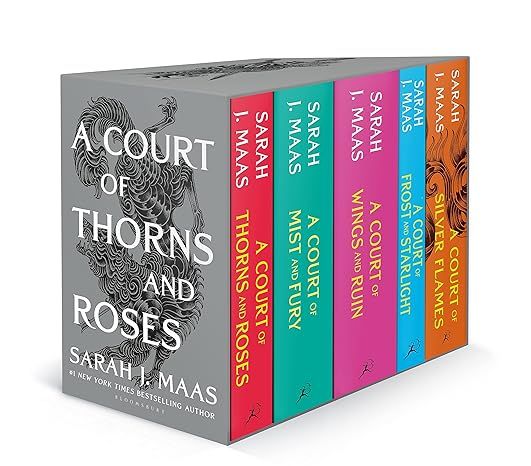
A Court of Thorns and Roses Paperback Box Set (5 books) (A Court of Thorns and Roses, 9)
4.8
-
26,559
$37.99

Pretty Girls: A Novel
4.3
-
88,539
$3.67
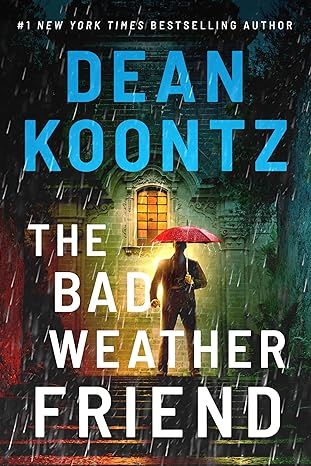
The Bad Weather Friend
4.1
-
34,750
$12.78
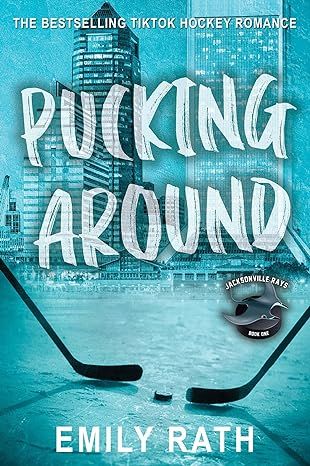
Pucking Around: A Why Choose Hockey Romance (Jacksonville Rays Hockey)
4.3
-
41,599
$14.84
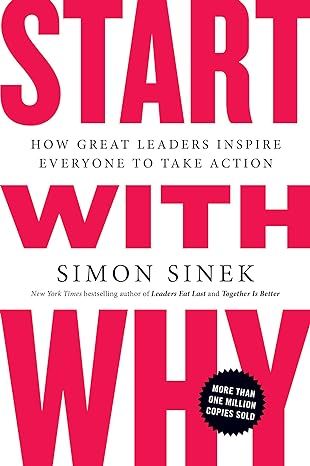
Start with Why: How Great Leaders Inspire Everyone to Take Action
4.6
-
37,152
$9.99
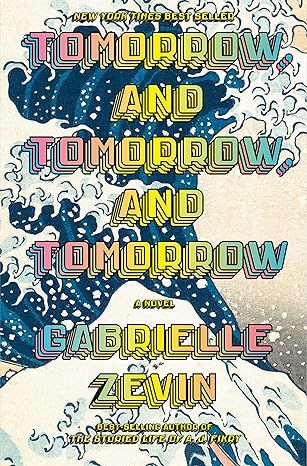
Tomorrow, and Tomorrow, and Tomorrow: A novel
4.4
-
95,875
$13.99
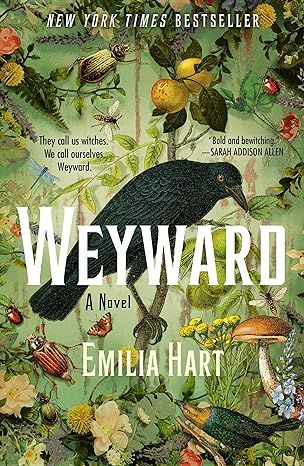
Weyward: A Novel
4.4
-
27,652
$11.99
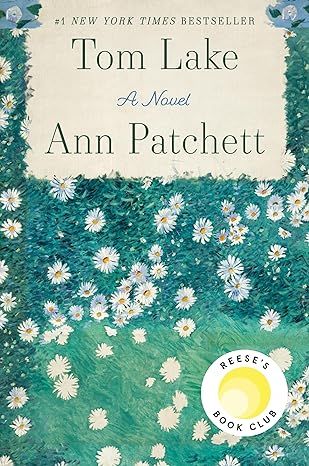
Tom Lake: A Reese's Book Club Pick
4.3
-
37,302
$15.74
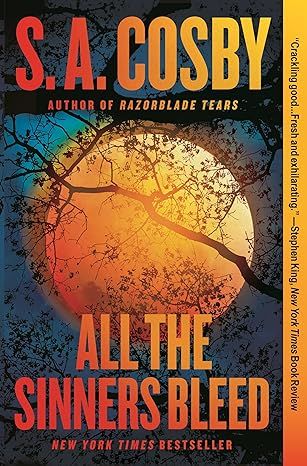
All the Sinners Bleed: A Novel
4.4
-
12,894
$13.55
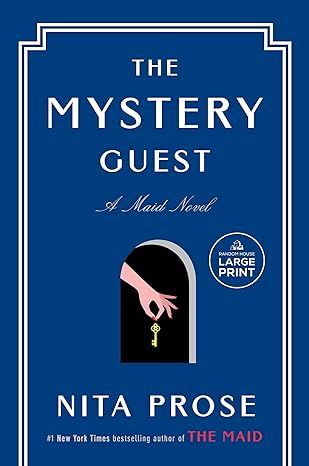
The Mystery Guest: A Maid Novel (Molly the Maid)
4.3
-
9,844
$14.99

Bright Young Women: A Novel
4.2
-
8,485
$14.99
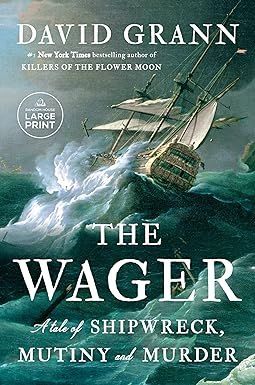
The Wager: A Tale of Shipwreck, Mutiny and Murder (Random House Large Print)
4.5
-
28,672
$14.99
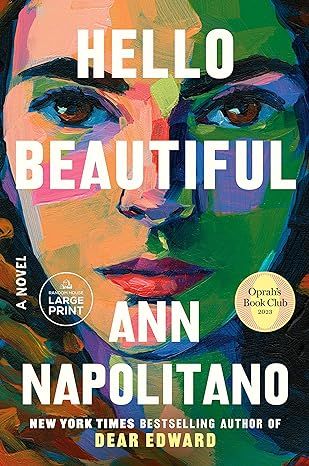
Hello Beautiful (Oprah's Book Club): A Novel (Random House Large Print)
4.4
-
79,390
$14.99
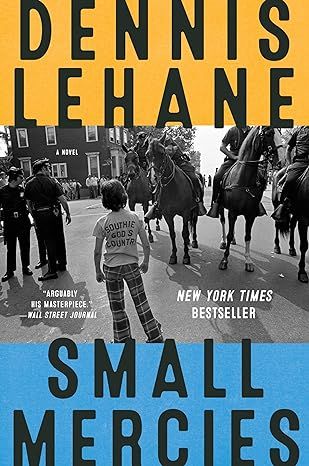
Small Mercies: A Detective Mystery
4.5
-
16,923
$10.00

Holly
4.5
-
31,521
$14.99
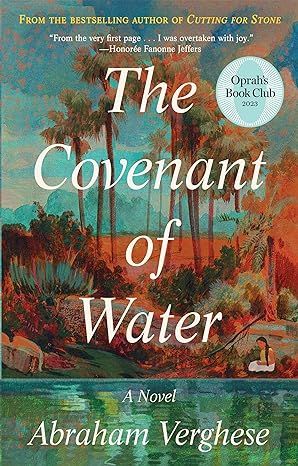
The Covenant of Water (Oprah's Book Club)
4.6
-
69,712
$9.24
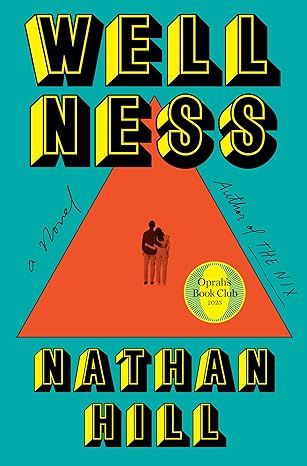
Wellness: A novel
4.1
-
3,708
$14.99
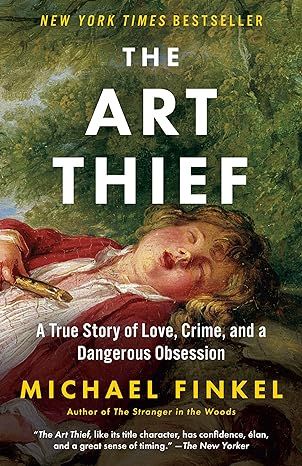
The Art Thief: A True Story of Love, Crime, and a Dangerous Obsession
4.3
-
4,805
$14.99
